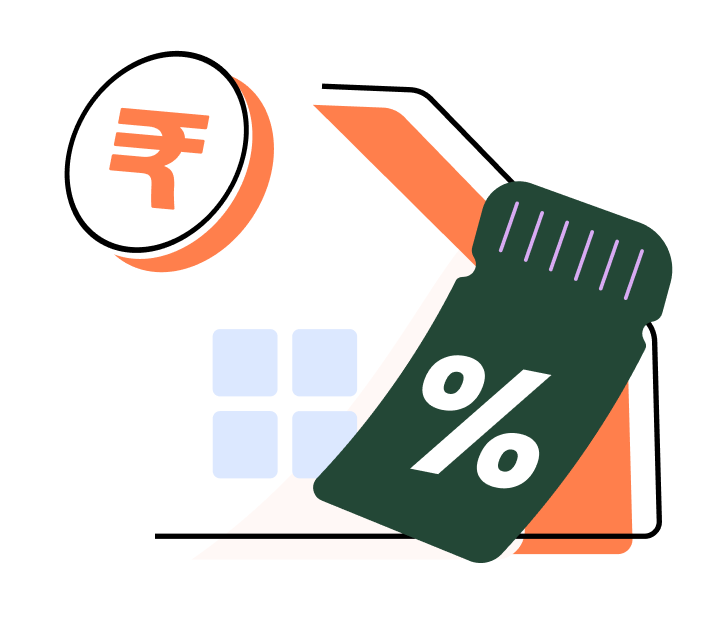A provisional certificate contains all of the crucial facts about your home loan in a single document.
If you intend to apply for a home loan or have previously applied for one, you should be aware of the significance of a home loan provisional certificate. This is because you will need this certificate to take advantage of the tax breaks available when applying for a home loan. Continue reading to learn about a home loan provisional certificate.
A housing loan provisional certificate is an official document that keeps home loan borrowers informed of their loan status. This paperwork also allows them to claim tax breaks on house loans. It is an official report for a housing loan account. When someone (borrower) applies for a house loan, the bank (lender) gives them an official statement with all loan details at the start of each year.

A home loan provisional interest certificate includes the following borrower information:
These facts include basic information like the borrower's name and mobile number.
When communicating with the lender about their house loan, the borrower must have their account number handy. Each home loan account is assigned a unique number.
The actual loan amount of a house loan is the sum of the principal and interest paid. This is the total amount that the borrower must repay once the loan's term has ended.
The provisional interest certificate specifies the start and finish dates of your repayment cycle.
The interest rate on a loan influences the total amount that the borrower must repay to the lender. This interest rate appears on the borrower's home loan provisional interest certificate.
Borrowers can choose between fixed and floating interest rates. A fixed-interest rate house loan has an interest rate that remains fixed during the loan's term. When you choose a floating interest rate, the interest rate can fluctuate based on market conditions.
If your payback cycle has begun, you can keep track of the loan amount repaid by checking the provisional certificate.
If you have previously not made payments to the settlement of your loan, the occurrence(s) will be documented on your provisional interest certificate.
Any modifications in the principal amount will be reflected in the home loan provisional certificate.
Some lenders allow customers to pay a significant portion of their home loan's outstanding principal amount before the due date. This is known as a part-prepayment facility, and the information is included in the house loan provisional certificate.
In general, a provisional home loan certificate helps borrowers manage their money. It can be useful in a variety of ways, including:
It helps the borrower keep track of their annual finances.
Gives the home loan borrower a comprehensive picture of their financial condition and how to plan their future expenses. It also helps with long-term financial planning.
Keeps track of all the borrower's repayments, including the total amount already paid and the balance amount.
Clarifies the benefits of loan prepayment.
Serves as proof of investment, allowing the borrower to claim an income tax deduction.
Borrowers of home loans must submit the home loan provisional interest certificate under Sections 80C and 24 of the Income Tax Act of 1961 to claim tax benefits on both the principal loan amount and the interest component.
Section 24 allows borrowers to deduct up to Rs. 2 Lakh in income tax on the interest they pay on their house loan in a given year.
Again, Section 80C allows a tax deduction of up to Rs.1.5 Lakh on the main loan amount, assuming the owner/borrower does not sell the property within the first five years of possession. The borrower must obtain a home loan provisional certificate from the lending bank.
If the bank offers it, they can download the certificate from its website; otherwise, they can pick up a printed copy by going in person to the bank.
Your Dream Home is Now a Click Away
A provisional interest certificate, or a home loan provisional interest certificate, presents you with frequent updates on the status of your home loan. It includes a summary of the interest and principal amounts you paid on your home loan for the current fiscal year, among other critical information.
Home Loan Types & Eligibility Guide
Home Loan Insights and Guides
Moneyview UPI Insights and Guides
Personal Loan by Income and Purpose
Disclaimer
The starting interest rate depends on factors such as credit history, financial obligations, specific lender's criteria and Terms and conditions. Moneyview is a digital lending platform; all loans are evaluated and disbursed by our lending partners, who are registered as Non-Banking Financial Companies or Banks with the Reserve Bank of India.
This article is for informational purposes only and does not constitute financial or legal advice. Always consult with your financial advisor for specific guidance.
Was this information useful?